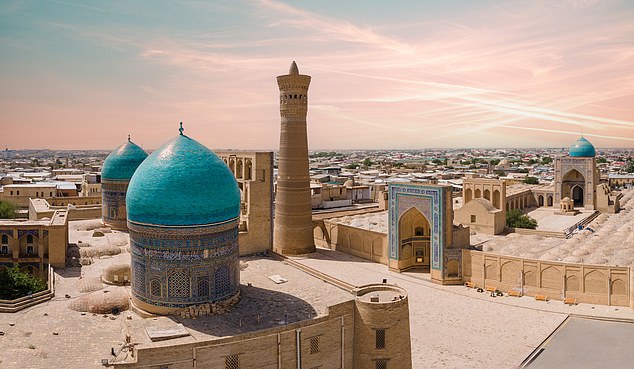Huntsman Ruslan sits astride his horse on the craggy mountain top, with the golden eagle Kara-Barachyn perched on his wrist.
He raises his arm and the bird takes flight in search of prey, its cruel talons ready to knock to the ground anything it finds.
This scene has been repeated in Kyrgyzstan, a Central Asian nation, for thousands of years. The only difference between now and the time of Genghis Khan is that tourists are constantly snapping photos with their cameras.
When Genghis was in power, this mountainous country was part of the central belt of the vast trade routes known as the Silk Roads. For nearly 2,000 years, until the Middle Ages, goods and ideas flowed between China and Europe along them, with Kyrgyzstan, Kazakhstan and Uzbekistan as central hubs.
Some of the best surviving examples of such goods will go on display from Thursday at the British Museum’s Silk Roads exhibition, which runs until February.
Stunning: Matt Quinton embarks on a Silk Road tour through Kyrgyzstan, Kazakhstan and Uzbekistan (pictured)
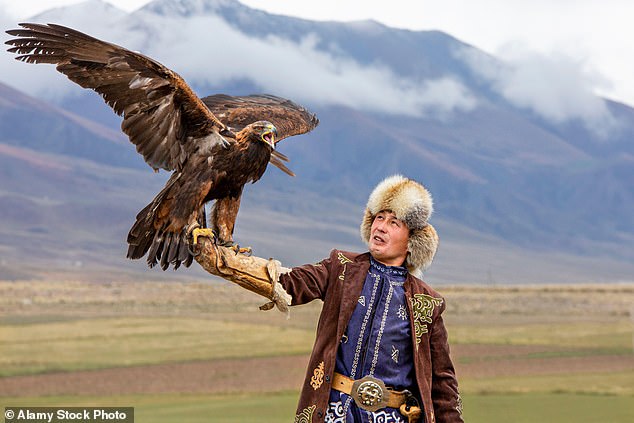
Above, an eagle hunter and his golden eagle in Kyrgyzstan. Matt says: “The highlight of my trip is without a doubt the eagle hunting display.”
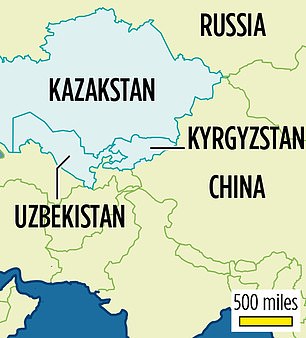
For nearly 2,000 years until the Middle Ages, goods and ideas flowed between China and Europe along the Silk Road, which passed through the three countries that lie between present-day Russia and China.
But to see the treasures in their original context, you have to go to the three countries that today lie between present-day Russia and China.
I join a group of 15 people, accompanied by a driver and a guide in a high-end minibus. Hotels, some meals and the itinerary are pre-arranged.
We start in Kyrgyzstan, where people have recently abandoned the nomadic lifestyle and some still live in yurts. After a leisurely hike through the vast Ala-Archa National Park, we cool off in the salty Issyk Kul Lake.
At Burana Tower, a 1,000-year-old Silk Road stopping point, we hear how merchant caravans would gather here for protection from bandits. It’s a magnificent setting. But when I ask our guide, Vitaly, what prompted his grandparents to come here from Russia, he explains: “It was Stalin’s decision for us to move, not ours!”
In fact, the whole of Central Asia was used as a dumping ground for the less fortunate citizens of the USSR. While these three countries have long since turned their backs on communism, it would be wrong to say that they are now free and fair democracies. However, this region is safe and welcoming to tourists, although English is not widely spoken.
At a restaurant in Kyrgyzstan’s capital, Bishkek, when asking about local specialties, the staff talked about reality TV stars. Finally, a manager explains: “The best lamb comes from a breed we call Kim Kardashian because of the size of her…” Ah, I see. At least it goes down better than another local favorite, fermented mare’s milk. As strong as beer, this sour drink, like an alcoholic Yakult, brings tears to my eyes.
As my group drinks, the vendor pats me on the back: “We have to feed the horses the right herbs to get the perfect taste.”
The highlight of my trip is undoubtedly the eagle hunting display courtesy of Ruslan, but a close second is a night in a Kyrgyz yurt in the Djety Oguz Mountains.
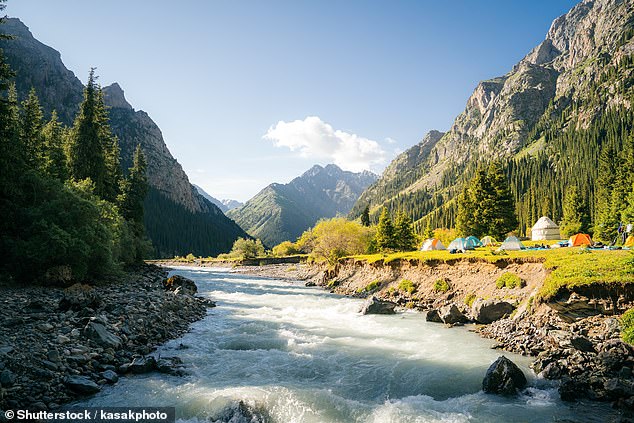
Matt reveals that in Kyrgyzstan (pictured) people have recently abandoned the nomadic lifestyle and some still live in yurts. He spent a night in a Kyrgyz yurt in the Djety Oguz Mountains during his trip.
As the temperature drops, I bury myself in my blankets and fall asleep listening to the neighing of the horses.
We enter Kazakhstan, a country larger than the whole of Western Europe, and visit the ancient capital Almaty, with its fabulous restaurants. As my travelling companion David notes when the bill arrives: “I paid more than this for a takeaway from Pret A Manger in Heathrow.” Here, the focus shifts from nature to culture and history, and I am stunned by the colourful Zhenkov Cathedral. We arrive as the bell-ringing team finishes practising, and, surprisingly, Vitaly persuades them to let us have a go.
The team’s willingness to give up their time just to show a group of complete strangers how everything works, despite the language barrier, is truly heartwarming, although being so close to the massive bells makes it difficult for my group to hear the rest of the day’s tour.
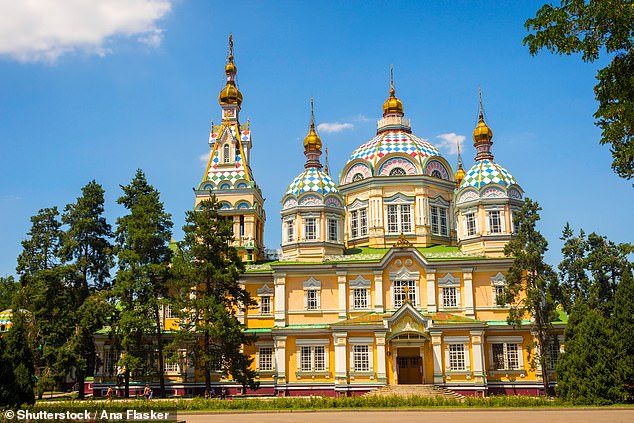
On a visit to Almaty, Kazakhstan, Matt is impressed by the colorful Zhenkov Cathedral (pictured)
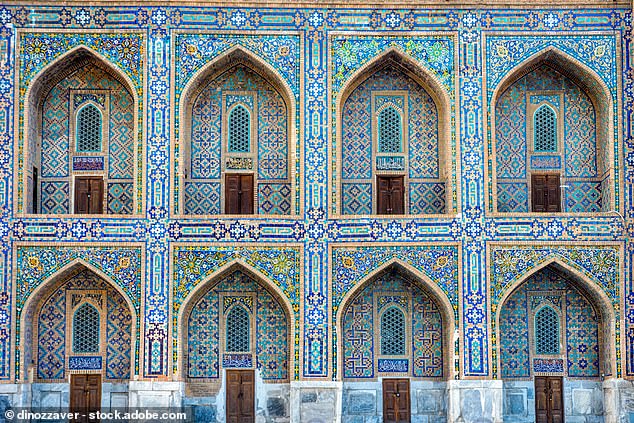
Stunning: Above, the gleaming arches of a tiled mausoleum in Samarkand, Uzbekistan, which Matt says is “the shining jewel of the region.”
Taking a sleeper train to Uzbekistan, I find the country noticeably warmer and, as a former part of the Persian Empire, culturally more similar to the Middle East.
When I ask Dilshod, our guide on this part of the trip, about a high heel sticker on a car window, he explains: “Oh, that shows other drivers that it’s a women’s car, so they can be more considerate.”
Uzbekistan’s capital, Tashkent, has beautiful mosques, but the jewel of the region, just under 200 miles southwest, is the 2,500-year-old city of Samarkand. The imposing madrasas in Registan Square are dazzling, with blue and yellow tiles glistening in the light.
In the 15th century, maritime transport put an end to the dominance of the Silk Roads, and sadly, my journey must end as well. I may not return with a camel laden with valuable goods, but I have memories of an extraordinary part of the world that, in many ways, doesn’t seem part of this world at all.


